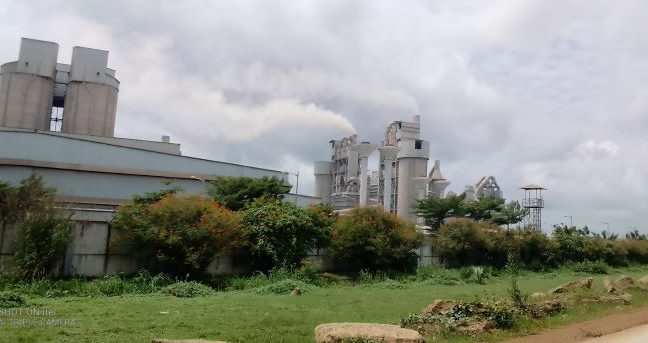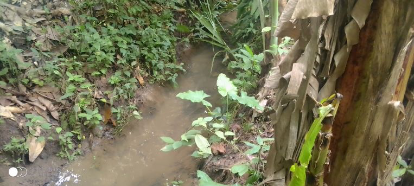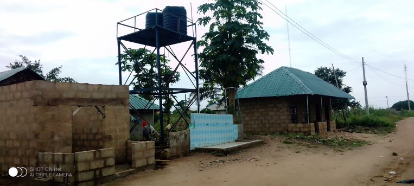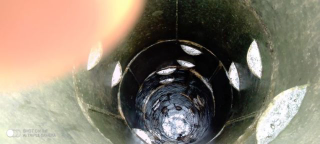Dangote Cement Shuns Mining Law, Contaminates Water In Yewa Communities

Potable water is scarce on the northern outskirts of Yewa, Ogun State, in a 150-year-old hamlet where a cement-paved road runs for kilometers through the middle.
It makes little difference if Ibese stands atop 760 million tons of limestone resources and is home to Africa’s cement behemoth, whose profit in the first half of 2021 was N191 billion.
The Agberiodo compound is located down the road in the ancient community. Residents get water for daily use from a dug well that is about 25 feet deep. The well water glistened to the untrained eye. It also doesn’t irritate the taste buds too much. That’s how most of the water samples from Ibese’s deep wells are. Tasteless. Colourless.
On July 17, a woman told this reporter that the water did not easily lather for washing.
“We use lots of detergents to wash anything well,” she said.
The presence of calcium, a limestone ingredient that makes washing difficult and expensive, was discovered by a chemical study of the water sample.
But there’s more to it than that.
A microbial test of the Agberiodo well water also yielded loads of microbes. If the people could see these bugs, they wouldn’t touch the water with a long pole, but “That is what we have been using for more than 20 years,” the housewife said.

For their daily supply, Ibese residents, about 10,000 in population, depended on four sources of water: the Lele stream, wells, and supplies from Ilaro.
The fourth was a borehole dug uptown at Ibese Tuntun, branded Dangote CSR, in blazing colours. It was a gift from Dangote Cement to the community, part of which Francis Awowole-Browne, the company’s Media and Community Relations Manager, told the media had gulped over N4 billion in the last eight years already.
Unknown to the communities, sections 116 and 117 of the Mining Act 2007 guiding the company’s operation prescribes some compulsory, duty-bound services. And it gives no occasion for Dangote Cement to blow its horn-like it did in the newspapers.
In a louder proclamation of its social responsibility at Ibese, the company branded a couple more structures: a health centre, with a small ward the size of a medium dining room, but without beds and drugs, four offices, some conveniences, and a plastic water tank.
There were also two blocks of classrooms for Eleja Primary School and another two blocks, with numerous cracks, for Asakanran Secondary School. Both schools are at Oke Odo, in Isale Ibese, about a 10-minute ride to the cement quarry where seismic blasting tore through the atmosphere at least three times a week.
The two water-supply facilities Dangote Cement provided the town were not functioning as of mid-October when the reporter visited again. The generators powering them had broken down. But when they used to function, youth leader Naheem Akinola said the boreholes supplied water downtown through the pipes running to two points. And that the piped water was cleaner than that of the wells and Lele stream.

Rainwater could have been an option at Ibese and its surrounding communities, including Araromi, Abule Imashayi, Maria, Balogun and other villages. But all the communities within the blast zone of quarry explosion were not only beleaguered with the shock of frequent bangs; they also suffered from suspended particles, cement dust, and other impurities which rain washed down their buckets.
The latest mining technologies the company used only checked for atmospheric impacts, but not completely. The residents of Abule Oke, Balogun and others situated around the factory narrated how they are affected by dusty air and cement suspension in rainwater. This includes catarrh, eye irritation, and other discomforts.

Findings by workplace and environmental health researchers even confirmed worse likelihood.
Olatunde Kofoworola and three others stated that lead and cadmium from cement kilns infused to Ibese soil and air could cause cancer for children and adults. They either breathe in the polluted air or consume contaminated crops. Something that the Environmental Impact Assessment (EIA) Act frowns at:




